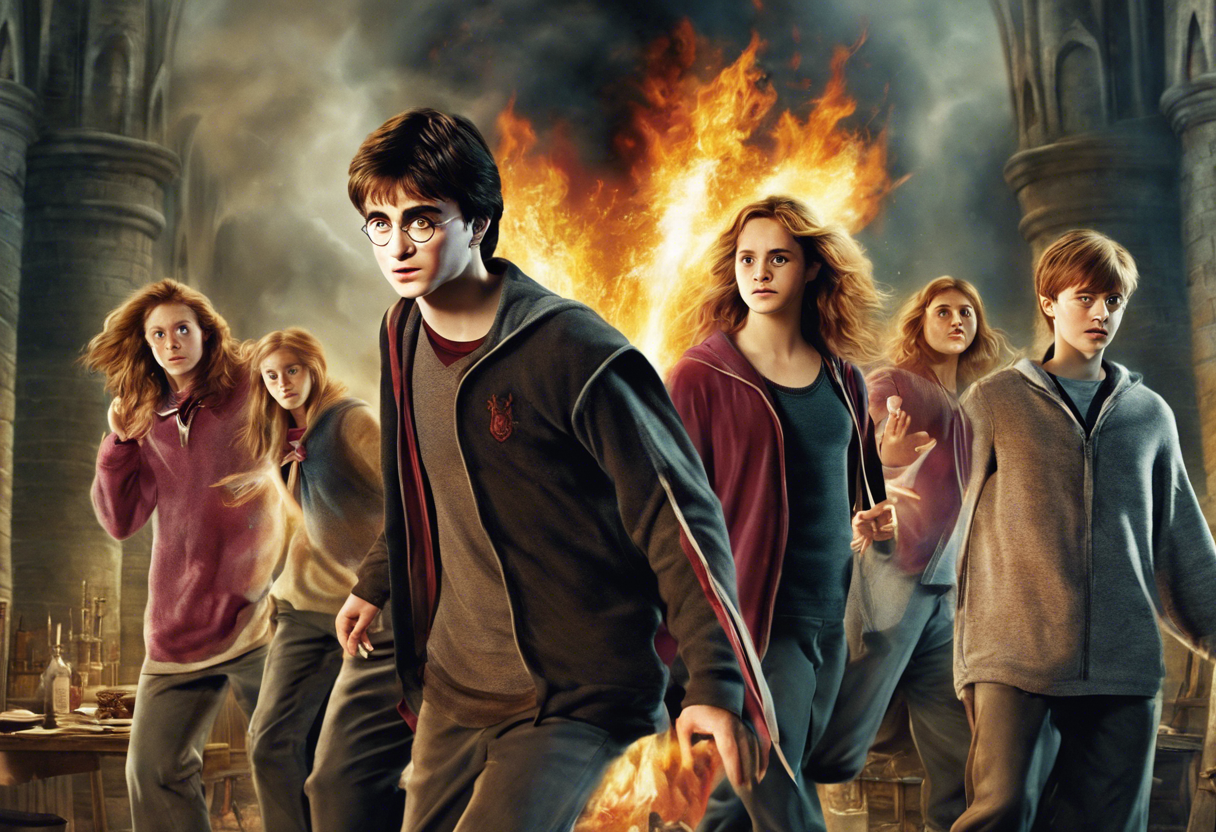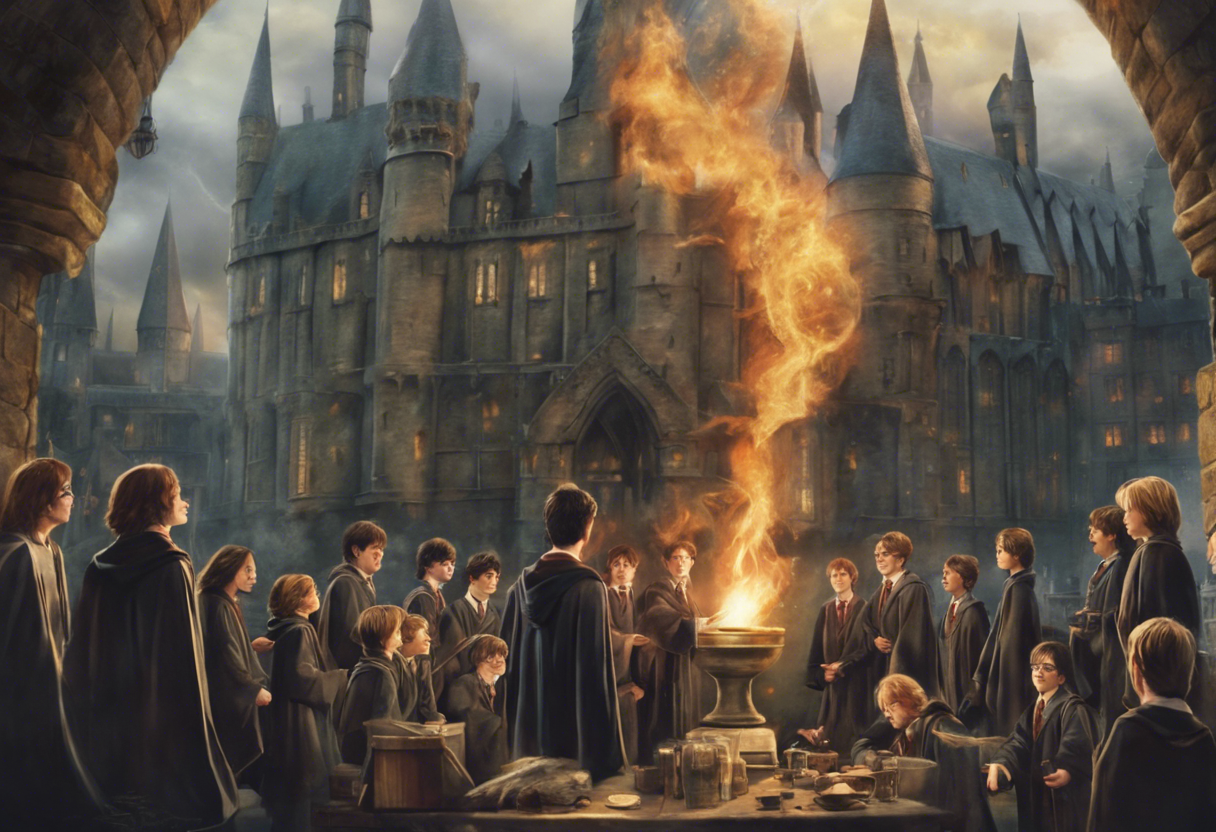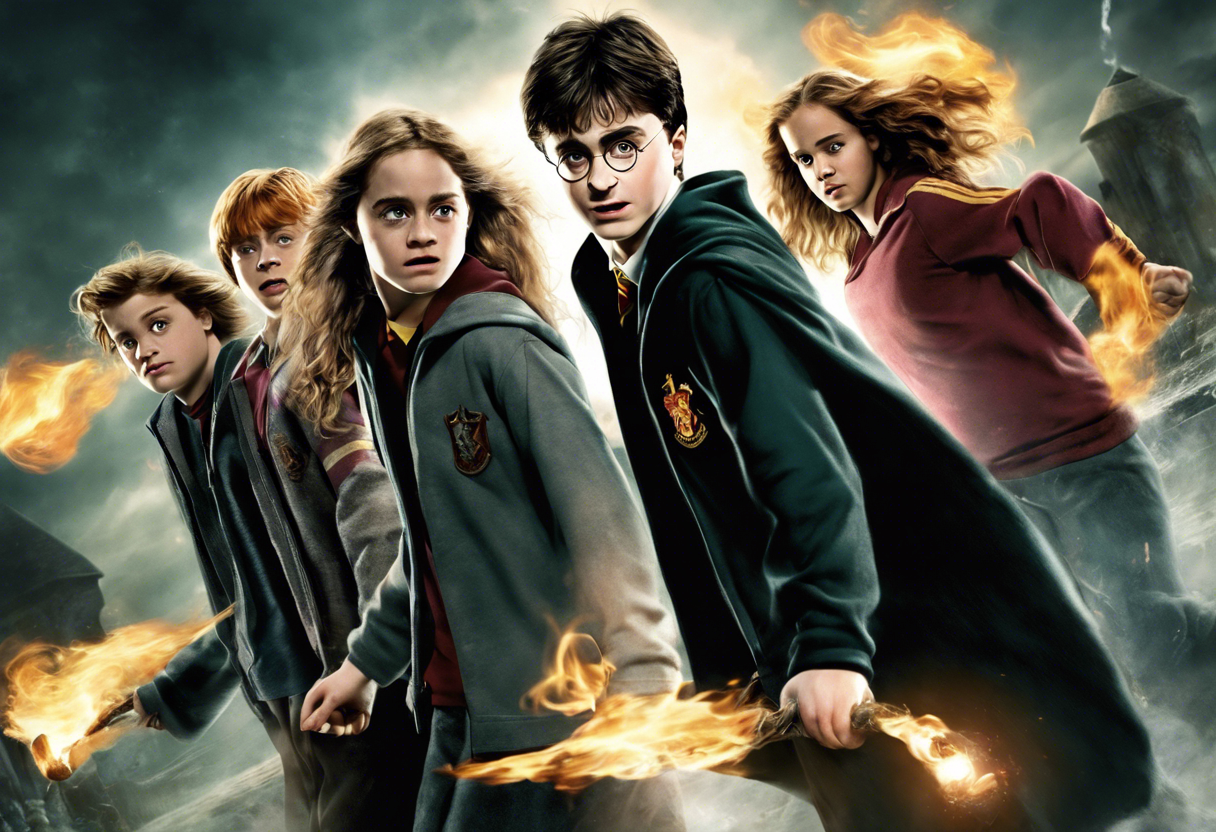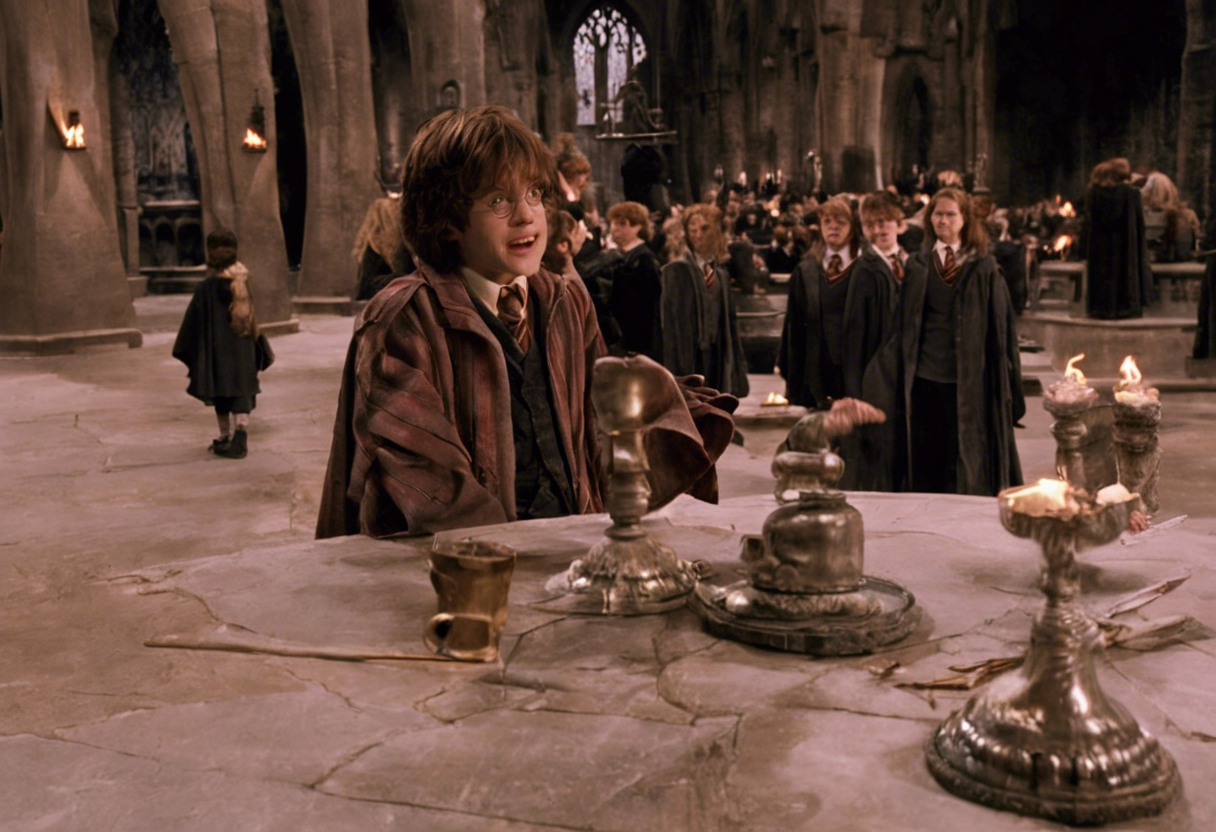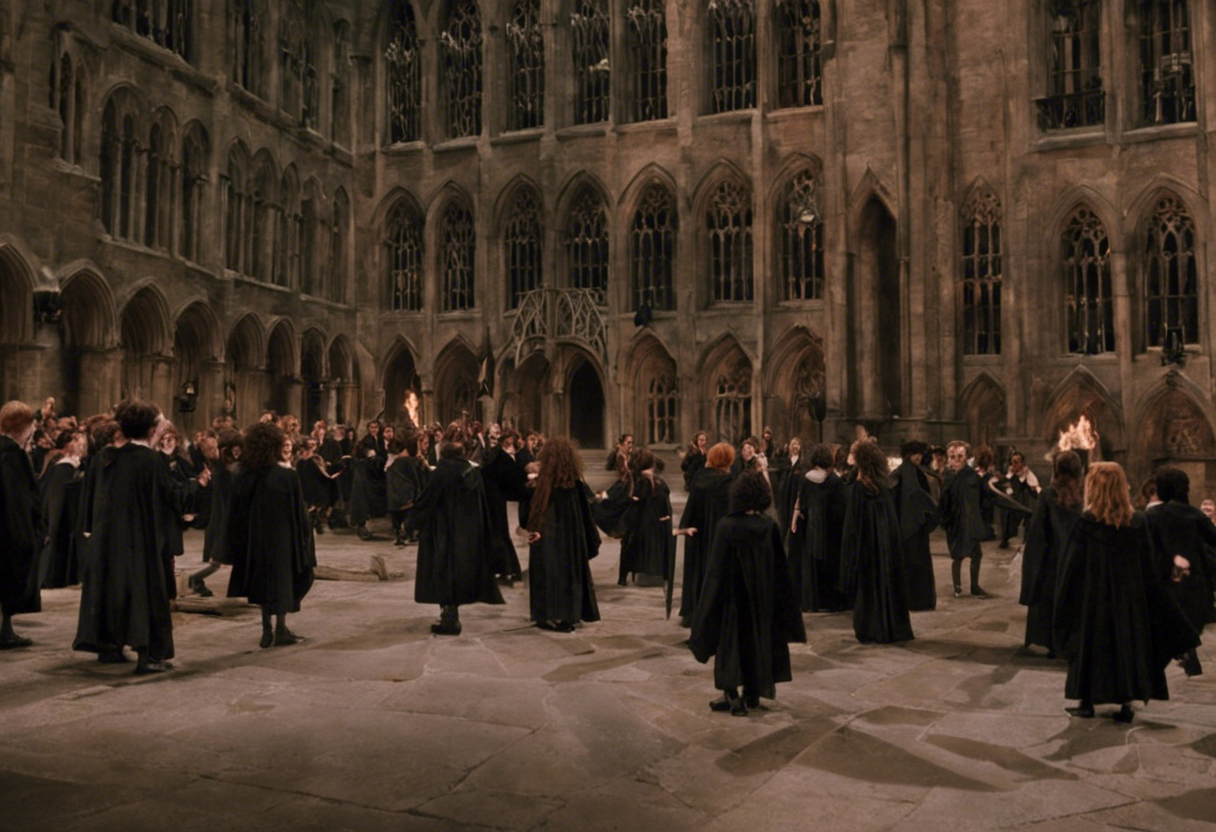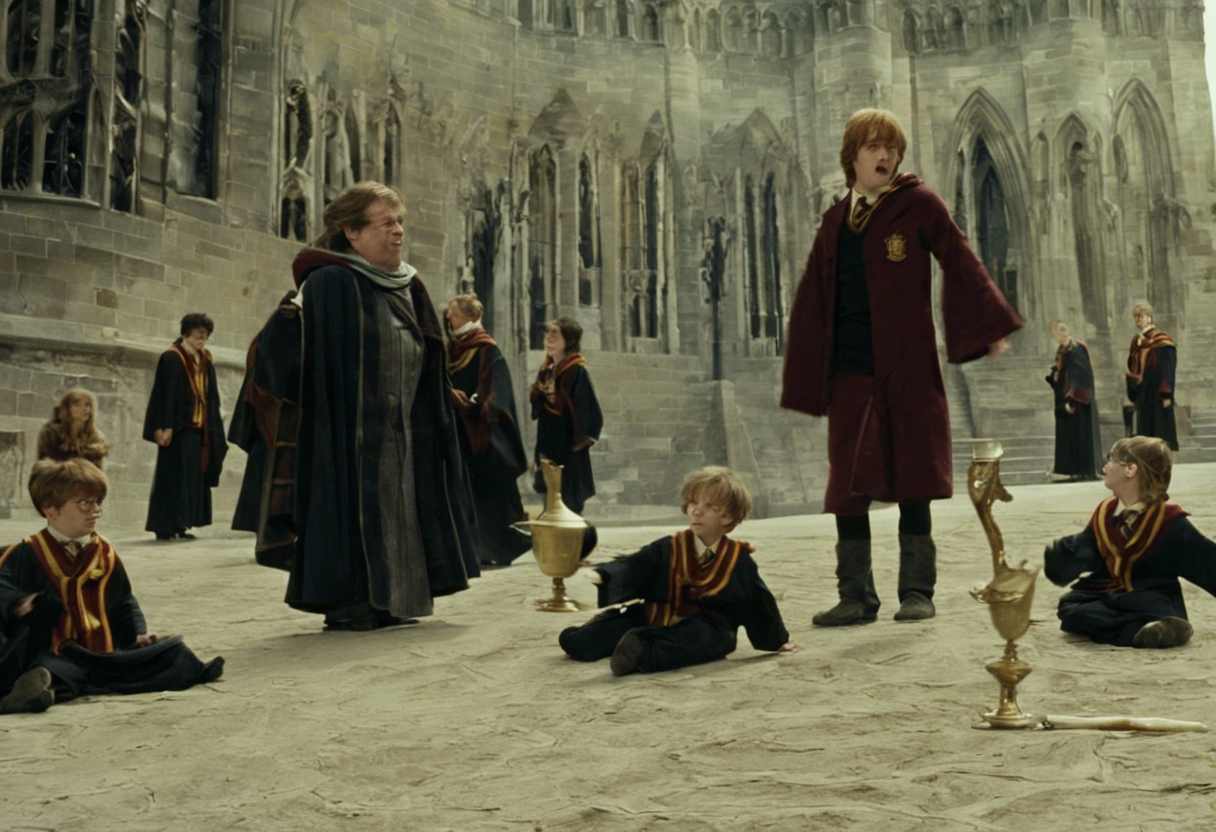Contents
Introduction
As a lifelong fan of the Harry Potter universe, “Harry Potter and the Goblet of Fire” means a lot to me — not simply as the fourth chapter in a cherished saga, but as a defining moment when the franchise truly matured. I first encountered this film in theaters with wide-eyed anticipation, already steeped in J.K. Rowling’s rich world from the books and previous movies. Watching it unfold was like stepping through a gateway into a darker, more complex chapter of Harry’s journey. The film doesn’t just continue the story; it expands the emotional and thematic depth of the series, delivering an experience that resonates far beyond its runtime. With a balance of thrilling spectacle, intricate character development, and a palpable shift toward more adult concerns, Goblet of Fire invites longtime fans like me to both relive the wonder and engage with new layers of meaning.
What makes this movie stand out is how it bridges childhood innocence and the looming realities of adolescence and danger, a tonal shift that was reflected not only in the plot but in the film’s cinematic style, performances, and score. As a fan who’s grown alongside Harry, I appreciate how Goblet of Fire respects its source material while also taking bold creative risks — from the introduction of the Triwizard Tournament’s daunting challenges to the harrowing return of Voldemort. The film feels like a rite of passage, both for its characters and for its audience, and every viewing deepens my appreciation for the masterful storytelling and craftsmanship at play.
Plot Summary
At its core, “Harry Potter and the Goblet of Fire” revolves around the Triwizard Tournament, an ancient magical competition revived at Hogwarts. Harry’s unexpected selection as a fourth champion, despite being underage and unwilling, sets the narrative in motion, thrusting him into a series of escalating trials that test his courage, intelligence, and integrity. Alongside fellow champions Cedric Diggory, Fleur Delacour, and Viktor Krum, Harry faces dangerous tasks — from navigating a dragon’s lair to retrieving something precious from the depths of the Black Lake. But the excitement of the tournament masks a darker undercurrent as sinister forces gather in the shadows.
The film’s climax is unforgettable: the maze-like final task morphs into a trap orchestrated by Death Eaters, culminating in the terrifying resurrection of Voldemort. This moment shatters the illusion of safety for Harry and his friends, marking a stark turning point in the series. The tension between the innocence of Hogwarts and the encroaching evil outside its walls is palpable. While the plot advances with precision, the film also invests heavily in character moments — Harry’s growing pains, the complex friendships, and the subtle political shifts within the wizarding world. The story expertly balances pulse-pounding action with emotional beats that keep fans deeply invested.
Themes and Symbolism
One of the most compelling aspects of Goblet of Fire is its exploration of themes that resonate on multiple levels. The transition from childhood to adolescence is vividly portrayed through Harry’s reluctant participation in the Triwizard Tournament, symbolizing the trials everyone faces when stepping into a more complex, often dangerous world. The tournament’s challenges are not just physical but metaphorical tests of character, courage, and self-discovery. The film’s darker tone underscores the loss of innocence, with Voldemort’s return representing the resurgence of deeply rooted fears and societal threats that cannot be ignored.
Symbolism weaves throughout the film in subtle but powerful ways. The Goblet itself stands as a symbol of fate and choice, its mysterious selection process raising questions about destiny versus free will. The maze in the final task can be read as a metaphor for life’s uncertainty and the labyrinthine path to maturity, fraught with unexpected dangers. Even the scar on Harry’s forehead, which begins to throb more intensely, symbolizes the painful connection to Voldemort — a constant reminder that past trauma shapes the present and future. These layers of meaning elevate the film beyond a mere fantasy adventure, inviting viewers to reflect on their own struggles and growth.
Cultural Impact
“Harry Potter and the Goblet of Fire” marked a pivotal cultural moment when it premiered in 2005. It was a bridge between the innocent magic of the early films and the darker, more mature narratives that would define the series’ later installments. This shift resonated widely, capturing not only the original book fans but also a new generation drawn to more complex storytelling in fantasy cinema. The film’s blend of spectacle and emotional depth helped solidify Harry Potter as a global phenomenon, influencing the way fantasy stories could be told on screen — no longer just escapist entertainment but a vehicle for deeper themes and moral complexity.
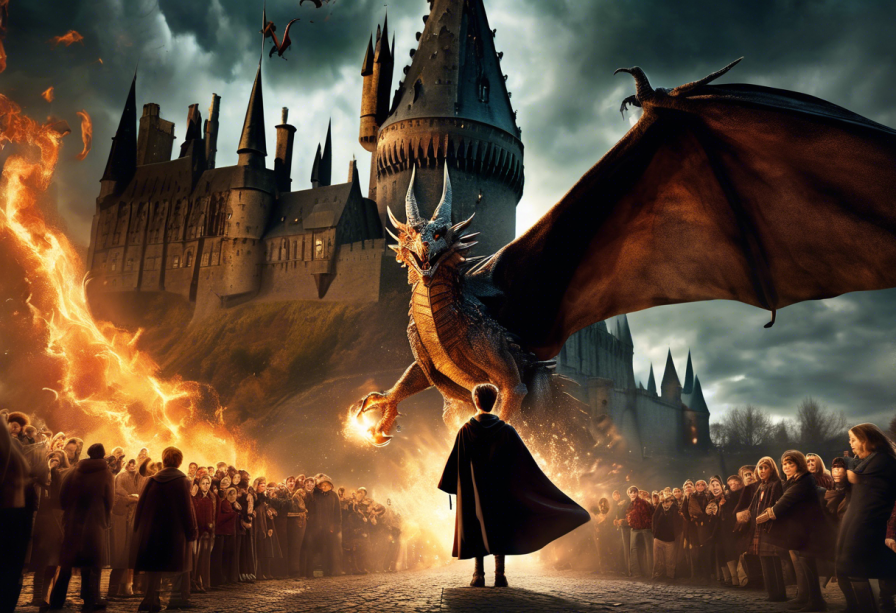
The Triwizard Tournament itself has since become iconic, inspiring fan art, cosplay, and themed events worldwide. Moreover, the film’s handling of friendship, bravery, and moral ambiguity resonated with audiences facing their own real-world challenges, particularly young viewers navigating the transition from childhood to adulthood. Goblet of Fire’s cultural footprint extends beyond cinema into education, psychology, and even political discourse, where the themes of unity and resistance against tyranny have been cited in various contexts. Its legacy endures in how fantasy franchises balance entertainment with meaningful commentary.
Callbacks & Easter Eggs
As a fan who has eagerly dissected every frame, Goblet of Fire is a treasure trove of callbacks and Easter eggs that deepen the story’s connection to earlier films and the broader Harry Potter lore. For instance, the subtle nods to the first film’s Quidditch matches resurface during the opening scenes at the World Cup, creating a sense of continuity and nostalgia. The reappearance of familiar faces, like the Weasleys and Dumbledore’s calm authority, grounds the narrative even as it introduces new elements like the mysterious Ministry of Magic delegation and the enigmatic Barty Crouch Jr.
Fans will also appreciate the detail in the Triwizard Tournament tasks — each referencing past magical creatures and spells introduced earlier in the series. The moment when Harry speaks Parseltongue echoes the first film’s revelation of his unique connection to Voldemort, hinting at deeper plot developments. Even smaller touches, like the design of the Goblet of Fire prop, feature intricate runes and symbols that invite further speculation. These layers reward attentive viewers and create a richer, more immersive experience that feels both fresh and familiarly magical.
Lore Expansion & Fan Theories
Goblet of Fire significantly expands the Harry Potter universe, introducing new magical traditions and political dynamics that have fueled countless fan theories. The Triwizard Tournament itself, rooted in wizarding history, offers insights into the interconnectedness of different magical schools and cultures, sparking debates about international magical relations. The revelation of Voldemort’s return adds depth to the overarching conflict, opening questions about prophecy, destiny, and the nature of dark magic.
Fan theories abound regarding key mysteries introduced in the film — from the true identity and motives of Barty Crouch Jr. to speculation about the contents of the Pensieve and the origins of the Deathly Hallows, subtly hinted at through thematic parallels. Some fans argue that the film’s portrayal of the tournament foreshadows deeper political intrigue within the wizarding world, while others focus on character-driven theories about Harry’s evolving powers and relationships. This fertile ground for speculation keeps the fan community engaged, enriching the franchise’s cultural life well beyond the screen.
Behind-the-Scenes Insights
Behind the magic, the making of Goblet of Fire was itself an epic undertaking. Director Mike Newell stepped in as the first non-British helmer of the series, bringing a fresh, cinematic vision that balanced spectacle with nuanced character work. According to interviews, Newell wanted to emphasize the darker themes while preserving the humor and heart that define the series. The cast, many of whom were growing up alongside their characters, embraced more complex performances — Daniel Radcliffe noted how the physical demands of the dragon task pushed him beyond previous comfort zones, while Emma Watson highlighted the evolving friendship dynamics on set as they matured.
On a technical level, the film broke new ground with its special effects — from the animatronic dragon to the underwater scenes in the second task, which involved innovative filming techniques and green screen work. Composer Patrick Doyle’s score also marked a tonal shift, infusing the soundtrack with a more dramatic and haunting quality compared to John Williams’ earlier themes. Anecdotes from crew members reveal a set buzzing with creative energy, tempered by the challenges of adapting a dense and beloved novel into a cohesive cinematic experience.
Science vs Fiction
While Harry Potter’s world is firmly rooted in fantasy, Goblet of Fire introduces elements that invite comparison to real-world science and psychology. For example, the portrayal of the underwater task reflects a surprisingly accurate understanding of human physiology under extreme pressure and oxygen deprivation, akin to free diving, though obviously augmented by magical intervention. According to studies on breath-hold diving, the human body can adapt to limited oxygen availability but risks hypoxia and narcosis — conditions the film cleverly circumvents through Harry’s use of gillyweed, a magical plant enabling underwater breathing, which serves as a fantastical stand-in for scientific ingenuity.
Moreover, the film’s depiction of fear and trauma, especially in Harry’s interactions with Voldemort’s return, aligns with modern understandings of post-traumatic stress. The reappearance of the scar’s pain and Harry’s nightmares can be interpreted through the lens of neuropsychology as manifestations of anxiety and conditioned fear responses, highlighting Rowling’s subtle incorporation of realistic emotional struggles within a fantasy framework. This blend of science and fiction enriches the narrative, grounding magical events in relatable human experience.
Production & Box Office
“Harry Potter and the Goblet of Fire” was a major milestone for Warner Bros., with a production budget estimated around $150 million, reflecting its ambitious scale and technical demands. The film’s marketing campaign was equally robust, leveraging the established fanbase with teasers, trailers, and tie-in merchandise that generated massive buzz ahead of its release. According to Variety, the movie grossed over $896 million worldwide, making it the highest-grossing film in the series at the time and cementing Harry Potter’s place as a box office powerhouse.
The film’s international appeal was particularly notable, with premieres spanning multiple continents and fan events that showcased the growing global enthusiasm for the franchise. The production’s logistical challenges, including shooting in multiple countries and coordinating complex special effects sequences, were met with critical acclaim for delivering a visually stunning and narratively compelling installment. This commercial and creative success laid the groundwork for the darker, more intense entries that would follow.
Critical Reception
Upon release, Goblet of Fire received generally positive reviews, with critics praising its mature tone and technical achievements. The film was lauded for successfully balancing the darker narrative with moments of levity and the series’ trademark warmth. Daniel Radcliffe’s performance, particularly his portrayal of Harry’s inner turmoil and bravery, was highlighted as a standout, with reviewers noting his growing depth as an actor. The ensemble cast also earned praise for their chemistry and the expansion of character arcs beyond the central protagonist.
However, some critics noted that the film’s pacing occasionally suffered due to the dense source material, with certain subplots feeling rushed or underdeveloped. Despite these critiques, the overall consensus celebrated Goblet of Fire as a pivotal entry that elevated the series’ stakes and emotional resonance. Fans and critics alike acknowledged it as the moment when the Harry Potter films matured alongside their audience, setting new expectations for fantasy cinema.
Facts vs Speculation
Separating canon facts from fan speculation is essential when discussing Goblet of Fire. Canonically, the Triwizard Tournament’s revival and Voldemort’s return are firmly established plot points, supported by the original novel and confirmed by J.K. Rowling. Behind-the-scenes insights from official sources corroborate the film’s production details and character interpretations. For example, the identity of Barty Crouch Jr. and his motivations are canon, though the film condenses and modifies some elements for cinematic clarity.
Speculative theories abound regarding nuances such as the true nature of magical artifacts glimpsed in the background or hidden meanings in dialogue and symbolism. While some fan theories — like connections to the Deathly Hallows or interpretations of Harry’s prophetic dreams — have been later validated by Rowling’s expanded lore, others remain imaginative conjectures. Distinguishing these helps fans engage critically with the material while appreciating the rich imaginative space the franchise offers.
Legacy & Verdict
For longtime fans and newcomers alike, “Harry Potter and the Goblet of Fire” stands as a cornerstone of the franchise’s evolution. It deepens the series’ emotional and narrative complexity, raising the stakes and enriching character journeys in ways that reverberate throughout the remaining films. Its blend of thrilling action, darker themes, and heartfelt moments creates a cinematic experience that rewards repeated viewings and thoughtful reflection. The film’s success also paved the way for the franchise to tackle heavier topics with confidence, ensuring its enduring relevance.
In verdict, Goblet of Fire is both a celebration of the magic that drew fans in and a sobering reminder of the dangers that lie ahead. It invites viewers to grow with Harry and his friends, making it an essential chapter in the saga. Whether you first encountered the film as a child or are discovering it anew, it remains a richly rewarding journey that balances fantasy spectacle with real-world emotional truths — a true hallmark of what makes the Harry Potter series timeless.

